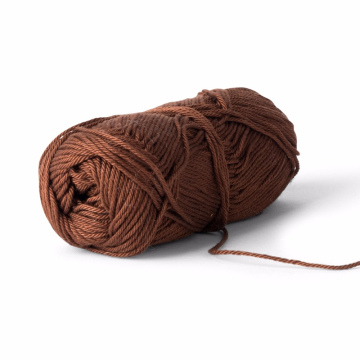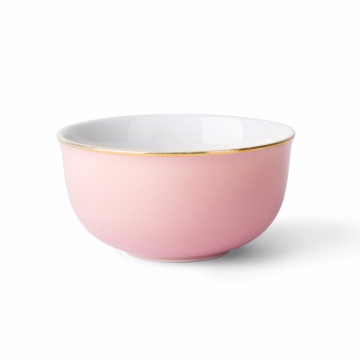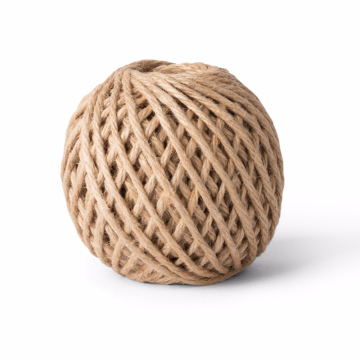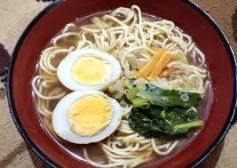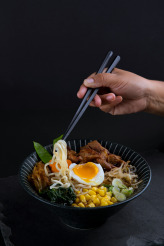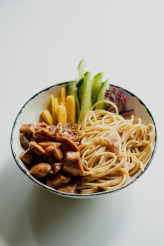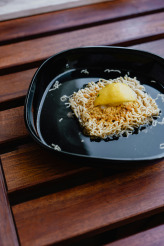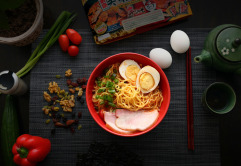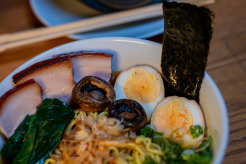Introduction to Japanese Sweets
Japanese sweets, known as wagashi, represent a profound aspect of Japan’s culinary heritage, reflecting its rich cultural history and aesthetic sensibilities. These delicacies are primarily made from traditional ingredients such as rice, red bean paste, and naturally sourced flavors, creating a unique palette of textures and tastes. From the moment one takes the first bite of a wagashi, there is an invitation to experience a harmonious balance of sweetness paired with the subtle flavors intrinsic to Japanese cuisine.
Among the most celebrated ingredients in these confections are matcha and mochi. Matcha, a finely ground powder derived from shade-grown green tea leaves, provides a distinctive flavor profile that is both earthy and invigorating. It is often used in wagashi to enhance not only the taste but also the visual appeal, as its vibrant green hue can make these sweets more enticing. Conversely, mochi, made from glutinous rice, boasts a chewy texture that elevates the sensory experience. Its versatility allows for various fillings, from sweet red bean paste to fresh fruit, making it a staple in both traditional and modern interpretations of Japanese sweets.
The enjoyment of wagashi is deeply ingrained in Japanese culture, often accompanying traditional tea ceremonies where each confection is thoughtfully paired with curated teas, with matcha being a predominant choice. Moreover, these sweets are not limited to ceremonial uses; they have evolved into contemporary culinary creations, reflecting current trends while honoring their historical roots. As one explores Japanese sweets, the delightful union of flavors and textures invites a journey into the essence of Japan’s sweet traditions and culinary innovations.
The Magic of Matcha: Flavor and Benefits
Matcha, a finely ground powder made from specially cultivated green tea leaves, has recently gained notoriety in culinary circles for its unique flavor profile and numerous health benefits. This vibrant green powder, primarily associated with Japanese traditions, is carefully harvested and processed to ensure the retention of important nutrients and flavors. There are various grades of matcha available, ranging from ceremonial grade, which is typically used in traditional tea ceremonies, to culinary grade, preferred for cooking and baking. Each of these grades serves its own purpose, allowing chefs and home cooks alike to incorporate this exceptional ingredient into a wide array of desserts.
The preparation of matcha is an art form in itself. To prepare matcha, finely ground powder is whisked with hot water until it forms a frothy, vibrant drink. This ritual is not only a moment of mindfulness but also enhances the overall experience of consuming matcha. Its rich umami flavor brings depth to various dishes, particularly when used in sweets like matcha mochi, brownies, and cakes. The presence of matcha elevates desserts aesthetically, providing a striking contrast to traditional flavors while imparting a distinct taste that can be both bold and subtle.
In addition to its exquisite flavor, matcha is recognized for its impressive health benefits. Rich in antioxidants, particularly catechins, matcha aids in neutralizing free radicals in the body, thus promoting overall health. Furthermore, the presence of L-theanine, an amino acid found in matcha, cultivates a sense of inner calm and focus, making it a perfect ingredient not just for flavor, but also for enhancing mental clarity. With its combination of taste and wellness, matcha has become a cherished element in the realm of Japanese confections, bridging the gap between tradition and modern culinary exploration.
Mochi Delights: The Versatile Rice Cake
Mochi, the beloved Japanese rice cake made from glutinous rice, holds a special place in the hearts of many, not just as a delightful treat but also as a symbol of cultural significance. Its unique texture, characterized by a chewy and slightly sticky consistency, makes it a versatile ingredient in various sweet and savory dishes. The process of making mochi is known as 'mochi-tsuki,' where glutinous rice is steamed and then pounded to achieve its signature texture. This ancient technique is still practiced today, often during the New Year celebrations and other festivities.
There are several types of mochi, each contributing to its wide appeal. The plain mochi, particularly the white and glistening variety, serves as a blank canvas for a multitude of fillings and flavors. One of the most popular mochi variations is 'daifuku,' a sweet treat that includes a filling of red bean paste or other ingredients such as fruit and ice cream, wrapped in a layer of mochi. Flavored mochi has also gained popularity, with innovations that incorporate a variety of ingredients such as matcha, fruit purees, and even flavors inspired by Western desserts.
Mochi ice cream represents a delightful fusion of traditional and modern cuisine, encasing scoops of ice cream within a thin layer of mochi. This produces an enjoyable contrast between the creamy ice cream and the chewy texture of the mochi skin. Seasonal variations of mochi, such as sakura mochi during cherry blossom season or yomogi mochi made with mugwort in spring, reflect Japan’s rich seasonal culture and the importance of nature in culinary traditions. Through personal stories and festivals, mochi transcends being just a food item; it embodies rituals and celebrations, often associated with communal joy and togetherness.
Combining Matcha and Mochi: A Culinary Journey
The harmonious blend of matcha and mochi creates a unique culinary experience that captivates dessert enthusiasts both in Japan and around the globe. This fusion not only brings out the earthy, rich flavors of matcha but also complements the chewy, delightful texture of mochi. As bakers and chefs explore the endless possibilities, traditional and modern recipes emerge, showcasing this magical combination.
One of the most popular creations in this realm is the matcha mochi cake, which marries the traditional elements of a classic cake with the distinct texture of mochi. Using glutinous rice flour as a base, the cake retains its moisture and offers a satisfying chew, while the matcha imparts a vibrant green hue and a subtle bitterness that balances the sweetness. Another beloved treat is the matcha-filled daifuku, where delicate mochi envelops a sweet matcha bean paste, creating a delightful contrast in flavors and textures.
Innovative bakers have also ventured into mochi-stuffed matcha pastries, where flakey dough encases a generous filling of mochi and matcha cream. The fusion appeal of this dessert exemplifies how traditional techniques can be adapted to modern tastes. For those looking to embark on their culinary adventure with these ingredients, sourcing high-quality matcha is essential. Authentic matcha, particularly ceremonial-grade, can elevate the dish's flavor and color, ensuring a delightful experience.
Experimentation in the kitchen is encouraged, whether by creating a matcha mochi tart or incorporating mochi into classic desserts like ice cream or cookies. When pairing these sweet delights, consider complimentary flavors like red bean, sesame, or even yuzu to enhance the delicate notes of matcha. With an array of recipes and innovative ideas, the delightful world of matcha and mochi invites all to explore and create memorable sweet experiences.

